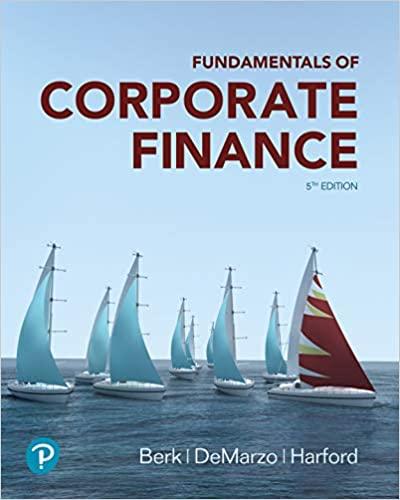You have just purchased a house for $500,000 that is located very close to the university you
Question:
You have just purchased a house for $500,000 that is located very close to the university you attend. You plan to put $100,000 down and borrow $400,000. You need to decide which mortgage deal to take. To find out what your choices are, go to www.bankrate.com and select the appropriate buttons to get a quote for a 30-year fixed rate mortgage on a new purchase (not a refinancing). Assume your FICO score is very high and you are looking for a zero point mortgage. Find the best coupon rate on a mortgage that requires paying no up front fees or points.9 We will refer to this mortgage as the no-fee mortgage and assume that the rate on this mortgage is your cost of capital. You are going to make the decision about which mortgage to consider by calculating the NPV of switching from the no-fee mortgage to each of the top six mortgages listed (sorted by their coupon). To calculate the NPV of this decision, calculate the difference in payments today, and over the life of the mortgage, by subtracting the alternative mortgage payments from the no-fee mortgage payments and calculating the NPV. For good measure, calculate the IRR as well.10 Assume that you will be living in the house for the next 30 years for certain and you will never repay the mortgage early. Which mortgage should you undertake? Do the NPV and IRR rules agree? Next, assume that the bank will allow you to borrow any fees and points, so the loan amount will increase by these charges. Repeat the above calculations. Finally, repeat the calculations assuming that you will repay the outstanding balance on the mortgage after 5 years, using the same cost of capital. What can you say about which mortgage you should choose if you have a long horizon versus a shorter horizon? Of course, the choice of cost of capital will vary by individual. Because your cost of capital might be different to the one used above, for both horizons, pick the option with the largest NPV and plot the NPV profile.9The mortgage coupon is listed in the rate field (not the APR) and is quoted as a monthly APR. Both fees and “points” refer to money that must be paid up front. Fees are specified in dollars, while points refer to a percentage of the amount borrowed. So, a $1000 fee together with a 1% point implies that you must pay 400,000 × 1% + 1000 = $5000 up front. This means that although the loan amount will be $400,000 you will actually only borrow $395,000 (so you need to put down an extra $5000).
Step by Step Answer:

Fundamentals Of Corporate Finance
ISBN: 9780135811603
5th Edition
Authors: Jonathan Berk, Peter DeMarzo, Jarrad Harford





